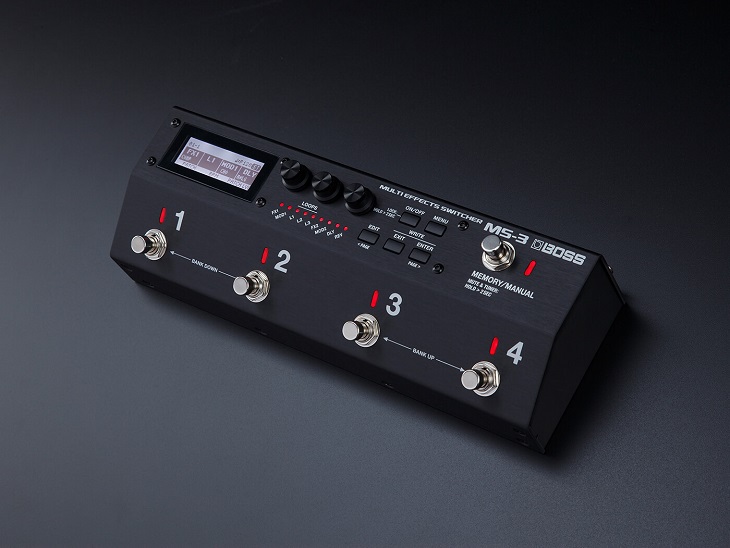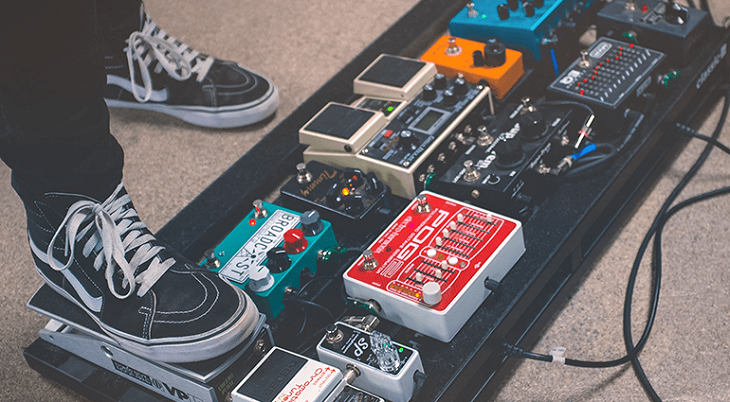If you are playing electric guitar, you know the world of guitar effects is wonderful, but a bit complicated. Whether you are a beginner or already an experienced guitar player, you need to find a way to expand on the sounds your guitar makes. Guitar effect processors and pedals can be a great addition to your guitar rig, but it’s difficult to know what to choose.
If you are looking at how they can benefit your rig, here is what you need to know about both effect processors and pedals. Making a difference between the two can help you choose what’s best for you and the sound you want to create.
Guitar Effect Processors vs. Pedals
What is a Guitar Effect Processor?

If you take a look at the guitar processing history, you will see that it all began with guitar pedals. However, as technology advanced, guitar effect processors came onto the scene offering multiple effects in one unit. They have come a long way since their inception and are only getting better and better. You can find a guitar effect processor that comes with loads of sound patches and effects.
It’s a digital device that changes the signal of an electric guitar to add special effects. It’s often used as a preamp device that sends the processed signal to the guitar’s amplifier, but also it can be built into a personal headphone amp. Even if you are a bit confused at the beginning, you will learn everything related to effects over time, from how to tweak them to how to control them.
Some amplifiers can create effects like overdrive, tremolo, reverb, distortion and, but in most cases, the effect should be “dialled” manually. And while there are amps that provide a remote foot pedal, a digital processor can change between several effects instantly whit the stomp of the foot only.
Most people in the guitar world are familiar with “effects pedals”. A simple effect pedal can produce only one effect, like distortion, for instance. For comparison, a programmable effects processor can produce from dozens to more than 100 special effects. It can be programmed in advance to store desired effects near each other using “user patches” to copy needed effects.
Also, with a guitar effects processor, you can create unique patches by applying compression, gain, echo, reverb, and more to already existing patches. Some models include amp and cabinet modelling to emulate the sound of different amplifiers and cabinet combinations. With guitar effects processors it’s much easier to experiment with sounds that you normally wouldn’t buy.
Typically, an effects processor includes an onboard digital tuner and provides a line-in jack for playing together with your favourite sounds. You can learn riffs easily as some effects processors can digitally record a small section of a song to be played back at slower steps without changing the pitch.
It’s a great tool for personal recording studios as well and many digital recorders include an effects processor these days. It can be powered by a single power unit rather than multiple outputs from a power brick. Also, it’s included in a few headphone amps.
What is a Guitar Pedal?

A guitar pedal is an effects unit that’s controlled by the guitar player’s feet, typically placed on the floor or on a pedalboard that sits on the floor, so he or she can keep both hands on the guitar. It affects the incoming guitar signal in many different ways to produce a specified effect. Guitar pedals work with analogue and/or digital circuits to change or route the waveform of the guitar signal.
There are many different guitar pedals available and deciding what to get can feel a bit overwhelming. Knowing the basics of guitar pedals can help you make the right choice and give you a good tone. Here are three important points to remember when it comes to guitar pedals.
- The order of the pedals impacts your tone
- The correct power source can make the whole difference
- The way you use your guitar pedal matters as well
If properly used, an effect pedal can help you achieve the exact tone and sound you are looking for in your guitar and amplifier. Once a guitar player finds that special sound, they will never give up on their favourite pedal.
Guitar pedals can benefit your sound, but they bring a bit of extra hassle with them when it comes to setting up your guitar rig and ensuring everything is perfect. Some guitar players use a simple setup, while others use a complicated setup consisting of many different kinds of effect units.
Although pedals and effects processors are certainly not necessary, they can make your sound much more interesting and dynamic and give your guitar a wide range of characteristic sounds. Many of the most recognisable guitar tones in music history were shaped thanks to the use of a specific combination of pedals or a digital processor.
However, you can always go without effects if you prefer so, especially if you have an amp that produces sounds you like, there is no need to add anything external. The truth is that many amps have excellent overdrive and even spring reverb maybe, but without any additional effects. And for some guitarists, that’s all they need to get an excellent sound.


















